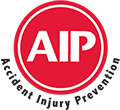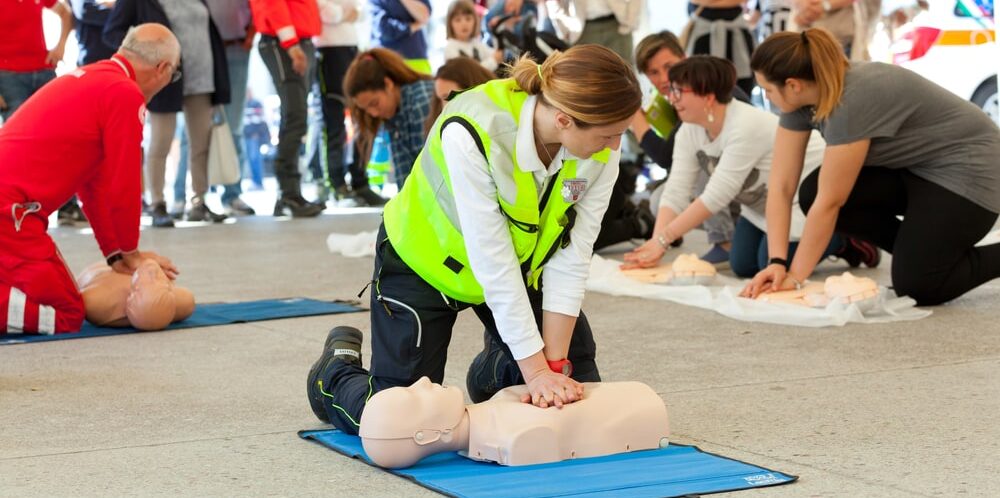Immediate first aid can often mean the difference between life and death. From cardiac arrest to choking or excessive bleeding, timely intervention can dramatically increase survival rates.
That’s why understanding the Goals of First Aid Training is so crucial – not only for healthcare professionals but for everyone.
At its core, first aid isn’t about replacing professional medical care – it’s about providing immediate, effective assistance at the scene of an emergency until advanced help can arrive.
Through proper training, you gain the knowledge, skills, and confidence to act swiftly and calmly when every second counts.
First Aid | The Primary Objectives
The Goals of First Aid Training are built around three essential objectives that guide every response in an emergency:
- Preserve Life
- Prevent Deterioration
- Promote Recovery
These principles form the foundation of an effective first aid response.
Let’s explore each one in detail:
1. Preserve Life
The first and foremost goal of first aid is to preserve life. Whether it’s performing CPR, clearing a blocked airway, or stabilizing someone after an accident, your role as a first-aider is to keep the person alive until medical help arrives.
This includes:
- Ensuring safety for both the victim and responder before providing aid.
- Performing the A-B-C check: Airway, Breathing, and Circulation, to maintain vital functions.
- Acting swiftly and decisively to restore breathing or circulation if needed.
In AIP Safety’s certified training courses, you’ll learn to perform CPR, use an Automated External Defibrillator (AED), and manage airway emergencies confidently – key components in preserving life.
2. Prevent Deterioration
The next objective of first aid is to prevent the person’s condition from worsening. Quick, knowledgeable action can stabilize the victim and reduce the severity of injuries before professional medical assistance arrives.
For example:
- Stopping bleeding using direct pressure or bandages.
- Immobilizing fractures or dislocations to prevent further injury.
- Moving a person to safety when they’re in immediate danger (such as fire, traffic, or electrical hazards).
- Monitoring vital signs continuously to detect changes in condition.
By learning these preventive techniques through structured First Aid Training, individuals are empowered to respond effectively and minimize harm – a critical part of the Goals of First Aid Training.
3. Promote Recovery
Beyond preserving life and preventing further injury, first aid also aims to promote recovery. Once the immediate danger has passed, the focus shifts to helping the person heal and remain comfortable until professional care takes over.
This involves:
- Cleaning and dressing wounds to prevent infection.
- Providing comfort and reassurance which plays an important psychological role in recovery.
- Monitoring the individual’s condition and encouraging rest.
- Offering pain relief (if appropriate and safe).
Promoting recovery also means ensuring the victim feels supported – both physically and emotionally. Calm, compassionate care can make a significant difference in how quickly a person recovers from shock or trauma.
First Aid | The Significance & Long-term Effect
The Goals of First Aid Training go far beyond emergency response – they foster a culture of safety, confidence, and preparedness across homes, workplaces, and communities.
Here’s why first aid training is so significant:
- Immediate Response Saves Lives – Quick, informed action prevents conditions from worsening and can double survival rates in certain emergencies.
- Bridges the Gap to Professional Care – First aid stabilizes victims, buying valuable time until emergency responders arrive.
- Builds Confidence and Reduces Panic – Knowing how to act during a crisis encourages calm, effective decision-making.
- Promotes Safer Workplaces and Communities – Widespread first aid knowledge reduces overall accident severity and enhances collective safety.
- Meets Legal and Workplace Safety Requirements – Many industries require certified first aiders on-site to comply with occupational health and safety regulations.
- Empowers Individuals – Training transforms bystanders into capable responders who can make a life-saving difference.
Who Should Take First Aid Training?
Everyone can benefit from learning first aid — because emergencies can happen anywhere, anytime. However, it’s particularly important for:
- Parents, caregivers, and teachers who oversee children.
- Construction, industrial, and office workers for workplace safety compliance.
- Coaches, fitness instructors, and outdoor enthusiasts who manage physical activities or remote situations.
- Community volunteers and healthcare professionals who may be first on the scene.
Whether for professional development or personal preparedness, understanding the Goals of First Aid Training empowers you to protect yourself and others.
First Aid Training in Calgary | Train with AIP Safety
AIP Safety’s First Aid Training in Calgary equips participants with essential life-saving skills, from CPR and AED use to wound management and injury prevention. Whether you’re an individual learner or a business seeking workplace certification, AIP’s hands-on approach ensures every participant leaves confident and capable.
Our certified instructors provide a comprehensive 8-hour AED, CPR, and Emergency First Aid program that meets OH&S (Occupational Health & Safety) regulations and exceeds industry standards. You’ll gain real-world experience through interactive lessons, practical exercises, and realistic emergency scenarios.
Become a Certified Lifesaver Today
Don’t wait until an emergency happens to realize the value of first aid.
Enroll in AIP Safety’s First Aid Training in Calgary and gain the confidence, skills, and certification to respond effectively when it matters most.
FAQ: First Aid Training & Certification
1. How long does a First Aid course take?
Depending on the course level, AIP Safety’s training can range from 6 to 16 hours. For example, Standard First Aid typically spans two days (16 hours), while Emergency First Aid can be completed in one day (6-8 hours).
2. Do I receive certification after the course?
Yes! Successful participants receive a First Aid Certification valid for three years, recognized across Canada.
3. Who provides First Aid Training in Calgary?
AIP Safety offers comprehensive, certified first aid courses led by experienced instructors. Programs include Emergency First Aid, Standard First Aid with CPR & AED, Oxygen Administration, and Fentanyl Awareness.
4. Can you provide on-site training for businesses?
Absolutely. AIP Safety offers convenient on-site training for corporate groups which are ideal for workplaces that require certified employees to meet OH&S standards.
5. What are the benefits for businesses?
First aid training enhances employee safety, reduces injury severity, ensures compliance with legal standards, and builds confidence during workplace emergencies.

